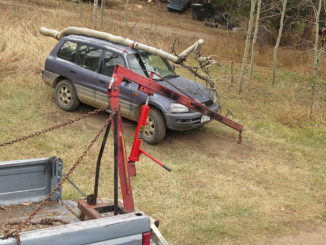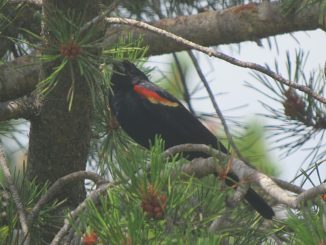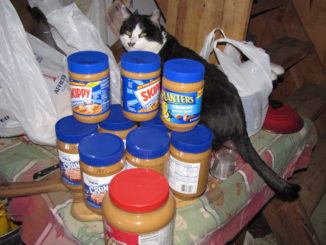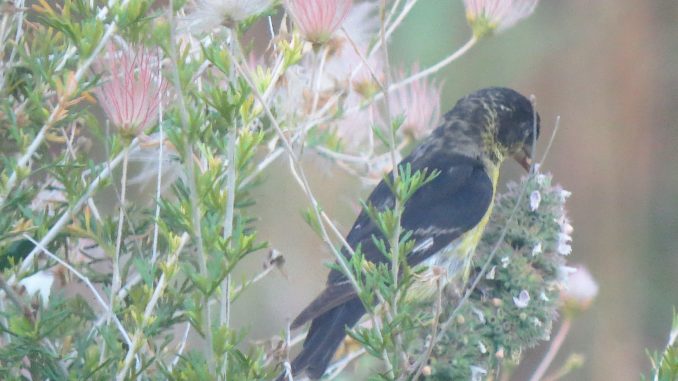
Sally Roth
[email protected]
Right outside the window where I sit to work every morning is a super-duper birdfeeder.
No, it’s not a hundred-dollar sweet wooden gazebo model. Not even a $10 tube feeder.
It cost exactly nothing. And it’s been entertaining me for weeks now, as birds come to eat.
No doubt about it, our own pleasure is why we feed birds. They don’t “need” us, except during major snowstorms, extended spells of bitter cold, or ice storms, when, as studies have shown, a helping hand can really make the difference between life and death.
In recent years, an anti-bird-feeding movement has sprung up. “Keeping a birdfeeder,” goes the argument, “makes birds unable to fend for themselves.”
Baloney. Except in the case of hummingbirds: The popularity of nectar feeders seems to have caused some species to expand their range or linger beyond their usual migration time.
In the case of passerine or “perching birds” (all the finches, jays, sparrows, bluebirds, and dozens of other familiar friends) and woodpeckers, feeders are just one more food source. Birds never lose their natural instincts for finding food on their own, no matter what fancy goodies we provide.
That’s where the “feeder” outside my window comes in. It’s a volunteer stand of native sunflowers, the same kind that brighten roadsides from Kansas to the Rockies. A weed to many people, albeit a pretty one.
For the past several weeks, the sunflower patch has been alive with birds. Goldfinches mostly, as they move through on migration, but also chickadees, house finches and blue jays. And that’ll continue for many weeks more, until the seedheads are picked clean.
I couldn’t do any better with a tube full of pricey nyjer (once called thistle) seed. Or that sweet wooden gazebo feeder.
Insect-eaters—the flycatchers, wood warblers, vireos, swallows, tanagers, orioles and other birds of summer—are going, going, gone, migrating southward to where bugs are abundant and reliable.
But most seed-eaters stick around all winter, or, like gray-and-white juncos and white-crowned sparrows, move into our area in fall, as a “winter vacation” from even more inhospitable climes of the far north or the high mountains.
Their favorite food? Weed seeds.
I often wonder what birds did before weeds from Europe moved in, because they sure depend on them all fall and winter. Usually despised by us, weeds like lamb’s-quarters, pigweeds, plantains, dock, catnip and many others supply a big part of their diet once they go to seed.
Garden flowers make great natural “feeders,” too. Sunflowers of any kind, coneflowers, cosmos, anise hyssop, Russian sage, zinnias, basil and other gone-to-seed garden plants draw in birds until every single seed is gone—and then serve as protective shelter, another big thing that attracts birds to our backyards.
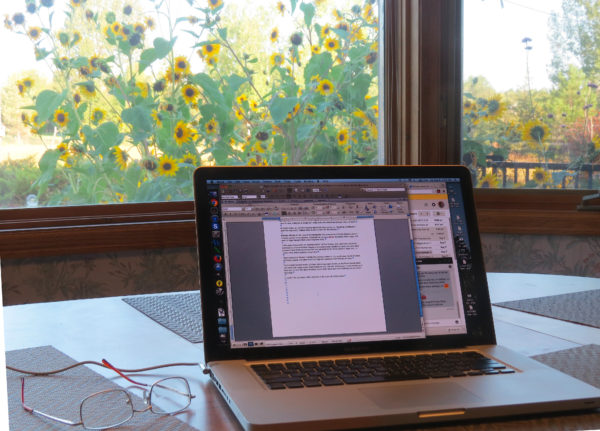
Watching birds come for the seeds of this riot of native sunflowers sure makes it way more fun to work.
That’s why, as fall arrives, my garden goes to the birds. Literally.
I don’t cut down finished flowers or plants, because they provide all-important cover and perching places, as well as bird food.
“Seeds for birds,” I say to anyone who questions why those dead sticks are still standing. And if that doesn’t work, um, um… “Winter architecture!” I proclaim, with a snooty lift of my chin.
I let some weeds stay, too, to ripen into the tiny but prolific seeds that sparrows, siskins, juncos, and finches love. (Be glad you’re not my neighbor—I’ve been known to actually encourage a weed patch, because it makes such a great observational laboratory. Though I do draw the line at thistles.)
If you’re not lucky enough to have a garden or some overlooked weeds right outside your window, now’s the time to set up a feeder stocked with sunflower and other seeds to tempt birds into close view.
Don’t worry, you won’t be spoiling their ability to find food on their own. A stem of weed seeds still beats even the best birdseed money can buy.
Support Northern Colorado Journalism
Show your support for North Forty News by helping us produce more content. It's a kind and simple gesture that will help us continue to bring more content to you.
BONUS - Donors get a link in their receipt to sign up for our once-per-week instant text messaging alert. Get your e-copy of North Forty News the moment it is released!
Click to Donate

